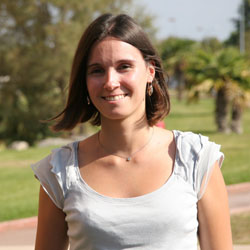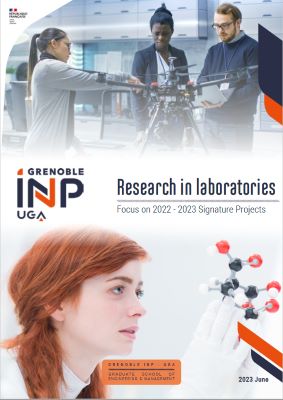 Aurélie Villard, who graduated in Industrial Processes and Environmental Management from Ense3 in 2008, is currently completing a doctoral thesis (CIFRE) at STMicroelectronics and G-SCOP in the development of eco-design methods adapted to the micro-electronics sector.
Aurélie Villard, who graduated in Industrial Processes and Environmental Management from Ense3 in 2008, is currently completing a doctoral thesis (CIFRE) at STMicroelectronics and G-SCOP in the development of eco-design methods adapted to the micro-electronics sector.There was a gap in the company, who offered me a subject for my final year project on assessing the life cycle of products, explains the young researcher. The work measured the environmental impact made by microchips, but did not provide the key for how to reduce it - hence the idea for carrying on with a PhD. After visiting several teams on the sites at Rousset, Grenoble and Tours, Aurélie discovered the various branches of micro-electronics. The collaboration enabled her to develop three support software tools for eco-designing circuits, which are currently being used as demonstrators.
The requirement comes from a simple observation: compliance with the ISO 14000 standards is now no longer enough as clients expect proof that the environmental impact of the life cycle of the products that they purchase is as small as possible. We look at every aspect of the microchip manufacturing process: the amount of greenhouse gas emitted and water consumed during the manufacture of products, the use of rare resources, etc. In the longer term, STMicroelectronics is planning that by 2015 all its products will be eco-designed - in other words, eco-design tools and methods will have been used systematically during their design.
SUMMARY
- Editorial :The rise of eco-design
- Eco-design: a concept adopted by the world of business
- An approach supported by the authorities
- PIME: two-fold environmental expertise
- Neopost: "The ideal end of life for a product is to be born again'!"
- Schneider Electric: fifteen years of eco-design
- Soon all new ST products will be eco-designed
- A new life for lithium





